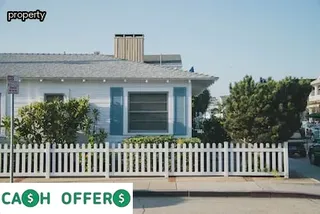In the state of Minnesota, landlords have a responsibility to understand the laws and regulations regarding property damage caused by their tenants. This article provides an overview of the implications of tenant damage in Minnesota, including some common scenarios that landlords may encounter.
It is important to note that each situation is unique and should be assessed on a case-by-case basis in order to determine the most appropriate course of action. Landlords must take into consideration any potential costs associated with repairing or replacing damaged property, as well as any potential legal liabilities resulting from failing to properly address tenant damage.
Furthermore, landlords should be familiar with their local laws and regulations related to tenant damage, as these will vary depending on where the rental property is located. Finally, it is essential for landlords to document all instances of tenant damage in order to ensure that they are properly protected in the event of a dispute between landlord and tenant.

When it comes to rental properties, landlords should be aware of the life expectancy of systems and functions. As part of their responsibility to keep the property in a habitable condition, they should understand when certain components are likely to need replacing or repairing.
This could include items such as major appliances like refrigerators, stoves, and air conditioning units that typically last between 10-15 years. Plumbing and electrical systems have a similarly long life expectancy but may require more frequent maintenance throughout their lifetime.
Landlords will also need to consider other aspects like interior painting, window screens, flooring and carpets that are more likely to need regular replacement or repair due to normal wear and tear. Understanding the life expectancy of different systems and functions is an important part of being able to responsibly manage a rental property in Minnesota.
As a landlord in Minnesota, it is important to conduct regular inspections of tenant property to ensure damages are not occurring. Move-in and move-out inspections are essential for monitoring tenant damage and maintenance needs.
During the inspection, landlords should pay special attention to walls, floors and carpets for stains, holes or other damages; appliances for malfunctioning or missing parts; and windows for broken glass or cracks. Additionally, inspect electrical outlets for any signs of frayed wiring or water damage, as well as doors and door frames for scratches or dents.
Lastly, take note of any furniture present that may have been damaged by tenants prior to their departure. By conducting move-in and move-out inspections regularly, landlords can identify tenant property damage quickly and efficiently, ensuring their rental property remains safe and secure.

In Minnesota, landlords are allowed to charge tenants a security deposit for their rental unit. The maximum amount that can be charged for the security deposit is two months' rent if the rental agreement does not specify otherwise.
Landlords must also provide tenants with written notice of the amount of the security deposit and how it will be used. If a tenant fails to pay rent or damages the property, the landlord can use the security deposit to cover any unpaid rent or necessary repairs or cleaning.
However, if a tenant disputes any deductions from the security deposit, they have 15 days after vacating the premises to dispute in writing any deductions made by their landlord. If no dispute is received within this time period, then it is assumed that all deductions were valid and legal.
Additionally, landlords must return a tenant’s security deposit within 21 days of termination of tenancy unless there are justifiable reasons for withholding part or all of it. It is important for landlords to understand these requirements in order to avoid potential legal issues when dealing with tenants and their security deposits.
When a tenant is leaving a rental property, it is important for the landlord to provide them with a formal move-out letter outlining their rights and obligations. The letter should detail the expectations of both parties during the move-out process, including when the tenant must return all keys and any other items that were given when they moved in.
It should also include information about how to properly clean the unit upon departure and any details regarding damage or repairs that need to be made before they vacate. Additionally, landlords should make sure to include any applicable state laws or regulations related to security deposits and how long they have to return them once the tenant has moved out.
This move-out letter is an important part of protecting both tenants' rights and preventing misunderstandings between landlords and tenants as they transition from one property to another.

When it comes to evaluating wear and tear versus damage to property as a landlord, it is important to understand the difference. Wear and tear are natural, everyday occurrences that come with having tenants.
These can include discoloration of carpets due to foot traffic, minor scuffs on walls or cabinets, or small holes in screens. Damage, however, is when something has been broken beyond repair or severely damaged due to negligence.
Examples of this would be broken appliances caused by misuse, large holes in walls from furniture being moved around too aggressively, or deep scratches on hardwood floors. It's important for landlords in Minnesota to recognize the difference between wear and tear and damage so they can properly protect their property and make sure tenants are held accountable for any damages they cause.
Common examples of general wear and tear in rental properties include carpets becoming worn over time, paint fading from sun exposure, and minor scratches or dents accumulating on walls and floors. As a landlord, it is important to understand how much damage can be expected from natural occurrences versus intentional neglect.
Carpeting may lose its original luster or become stained due to regular traffic and the occasional spill. Sunlight can cause walls to fade, while chips and dents may accumulate on hard surfaces as tenants move furniture around.
It is important to document the condition of the rental when tenants move out so landlords can deduct any damages beyond normal wear and tear that require repair or replacement. Additionally, landlords should consider installing durable flooring such as tile or vinyl plank so that carpeting does not need to be replaced as often due to staining or wearing down.
Understanding common examples of general wear and tear in rentals will enable landlords to better assess property damages when tenants vacate their units.

Tenant property damage is an unfortunate reality for landlords in Minnesota. As such, it’s important to understand the common types of damage that tenants may cause to rental property.
While the potential for tenant damage can vary between different rental properties, some of the most common examples of tenant property damage include physical destruction caused by vandalism or reckless behavior, such as holes in walls, broken windows or doors, and damaged flooring. Additionally, tenants may cause financial losses through negligence or misuse of appliances or fixtures.
This could include failure to properly maintain a home or carelessly allowing water leaks to occur. Tenants may also be responsible for aesthetic damage such as stained carpets and furniture, smoke odors from cigarettes or marijuana use, and pet hair throughout the home.
Tenants are also responsible for any additional cleaning costs required due to their neglect of basic housekeeping tasks. Landlords should be aware of these common examples of tenant damage in order to take the necessary steps to protect their investment and avoid costly repairs down the line.
It is important for landlords to be aware of the damage caused by their tenants and document it accordingly. Documentation is key in order to prepare an itemized statement of deductions, which can help protect the landlord's rights when it comes to recouping costs for repairs needed due to tenant property damage.
Landlords should begin with a thorough inspection of the rental property and document any existing damage from prior to the tenant occupying the space. Then throughout the tenancy, landlords should take pictures or videos of any new damages, as well as create detailed written reports that include descriptions and estimated costs for repairs or replacements.
All documentation should be properly stored in a secure location and reviewed before preparing an itemized statement of deductions for the tenant. Landlords should be sure to include all applicable charges and provide proof of purchase if necessary.
Ultimately, proper documentation of a tenant’s property damage is essential in providing legal protection and ensuring that landlords recoup their losses due to any damages caused by tenants.

If a tenant's deposit does not cover the damage or unpaid rent that they have caused, landlords must take legal action to recoup the losses. The first step is to contact the tenant and attempt to negotiate a resolution.
If this fails, landlords can choose to file a lawsuit in small claims court or pursue other remedies such as wage garnishment or bank account levies. The state of Minnesota requires all landlords to follow specific procedures when pursuing legal action against tenants, including providing written notice prior to filing suit.
Landlords should be aware of their rights and obligations outlined in the Minnesota landlord-tenant law before taking any kind of legal action against a tenant. Additionally, it is important for landlords to be familiar with the applicable laws and regulations regarding tenant deposits, property damage, and unpaid rent before initiating any type of dispute resolution with an uncooperative tenant.
Taking proactive steps like these can help protect both parties from future disputes and ensure that landlords are able to recover what is owed them in a timely manner.
When a dispute arises between a landlord and tenant, it is important for the landlord to understand their rights. Landlords can protect their rights by ensuring that they have clear policies and procedures in place which tenants must follow.
They should also take steps to document any damages to the property, as this will be key evidence in the event of a dispute. Moreover, landlords should ensure that they provide written notice of any damage to the tenant and that they keep detailed records of any communication with the tenant regarding the issue.
Additionally, landlords can use security deposits or other fees as protection against loss if necessary. Finally, landlords should consult with legal professionals when navigating complex disputes in order to ensure that their rights are fully protected.

Understanding the tenant laws in Minnesota can be intimidating for landlords. When a tenancy ends, landlords must return any deposits to their tenants according to the rules set forth by the state.
Minnesota requires that all deposits, including pet and cleaning deposits, must be returned within 21 days of the end of a tenancy unless there is damage or unpaid rent. Landlords are allowed to deduct from the deposit for any property damage that has occurred during the tenancy.
However, they must provide an itemized list of damages with proof of repair costs and written notice to the tenant before any deductions can be made. In addition to this, Minnesota statute 554.
037 outlines additional regulations for returning a deposit. It states that if deductions are taken from a security deposit, then landlords need to provide an itemized list with proof of damages and repairs no later than 14 days after the termination of the tenancy along with remaining funds due back to the tenant.
Understanding these rules is critical for landlords who wish to ensure they remain compliant while recouping losses due to property damage caused by their tenants.
As a landlord in Minnesota, it is important to understand the laws that protect you from liability for tenant damages. Tenant property damage can be costly and time consuming to repair, so it is important to have an understanding of what you are legally responsible for.
Minnesota state law provides landlord protections against tenant negligence but also outlines situations when a landlord may be held liable for tenant damages. It is important to note that certain types of damages, such as those caused by natural disasters, may not be covered under the law.
Additionally, landlords need to understand their rights with regards to tenant insurance policies and other resources available to them in the event of tenant damage. Knowing these laws can help landlords avoid potential legal trouble while providing tenants with a safe and secure living environment.

When a tenant causes property damage to a rental unit, it is the landlord's responsibility as the property owner to take any necessary steps to get insurance coverage for the damage. The first step should be to contact your insurance provider and provide them with all relevant information about the incident and damages.
Depending on your policy, you may be eligible for reimbursement from your insurance company for the repairs or replacement of damaged items. It is important to keep in mind that there may be limits on what is covered by your policy, such as certain types of damage or only covering an item up to its original value.
As a landlord, it is also essential to keep detailed records of all communication between yourself and your insurance provider, including claims forms and any other paperwork related to the claim. You should also make sure you are familiar with any state laws regarding tenant property damage that could affect your rights when filing an insurance claim.
Understanding these nuances can help ensure that you receive fair compensation for damages caused by tenants.
In the event that a landlord cannot resolve an issue with a former tenant over property damage, legal action may be the only route to recouping losses. However, there are several alternatives to seeking legal action against a former tenant for property damage.
One option is to reach out to the tenant and negotiate a settlement or payment plan outside of court. Another way is to file a claim with the tenant’s security deposit and deduct from it any costs due to property damage.
Additionally, landlords can seek help from local resources such as free or low-cost legal services and mediation services. Finally, some states have Small Claims Courts which allow landlords to file claims against tenants without having to hire an attorney.
Ultimately, these alternatives provide landlords with options other than seeking legal action against a former tenant for property damage in Minnesota.

A landlord's guide to understanding tenant property damage in Minnesota involves strategizing ways to minimize the risk of such damages before, during and after the lease agreement. It is important for landlords to be proactive when it comes to tenant damage prevention.
Before signing a lease agreement, landlords should conduct a thorough background check on potential tenants, assess their credit score and previous rental history. Furthermore, it is wise to take photos or videos of the property prior to any move-in and document the condition of the interior and exterior of the building.
During the lease agreement period, landlords can require tenants to have renters insurance that covers any damage they may cause while living in the rental unit. Moreover, landlords should conduct periodic inspections or walk throughs with their tenants in order to ensure that any renovations made by tenants are done properly and safely.
Lastly, at the end of a lease agreement landlords should inspect their rental unit as soon as possible after tenants vacate; this will help them determine whether or not any damages have been caused during tenancy. Proper communication between landlord and tenant is key when it comes to preventing tenant property damage; thus, making sure all parties understand expectations laid out in a lease agreement is essential for successful landlord-tenant relationships.
As a landlord in Minnesota, it is important to understand your legal rights when it comes to tenant property damage. In general, you have the right to deduct from a security deposit in case of damages if the tenant has caused the damage intentionally or through negligence.
To make a valid deduction, you must provide written notice to the tenant within 21 days of the end of the tenancy that includes an itemized list of damages and costs associated with repair or replacement. You must also include evidence supporting your claim and an explanation as to how the deduction was calculated.
Additionally, it is important to note that deductions are limited to actual costs incurred for repairs or replacement. If the cost of repairs exceeds the amount of security deposit paid, you may pursue further action against the tenant but cannot collect more than what was previously paid.

As a landlord, it's important to be aware of the tools and resources available to you when dealing with damages caused by former tenants. Knowing your rights and understanding Minnesota tenant property damage law is key to protecting yourself from any financial liabilities or disputes.
The best way to avoid problems is to have a written lease that clearly defines terms and conditions between the landlord and tenant. It should include detailed descriptions of what constitutes damage, who is responsible for repairs, and how much money will be charged if the tenant is found liable.
Additionally, having an inspection checklist can help landlords identify potential damage before it occurs and provide evidence in case of legal action. Finally, landlords should take photos or video recordings of all rental units on move-in day as well as when a tenant moves out.
This can be used as proof if there are any disputes over damages that may arise.
As a landlord in Minnesota, it is important to understand your legal responsibilities when dealing with tenant property damage and security deposits. Preparing yourself legally in case a former tenant sues for the security deposit can help you mitigate potential risks and prepare for any legal action.
It is essential that landlords know what their rights are under state law regarding the return of security deposits and the liability for damages that may occur during tenancy. Landlords need to make sure they have documentation of all communication with tenants concerning property damage, as well as keep records of all repairs made to the rental unit.
Furthermore, it is important to provide a detailed list of damages prior to the beginning of tenancy and upon move-out, as this will help landlords assess whether or not a tenant has acted responsibly while occupying their rental unit. Finally, landlords must be aware of the applicable deadlines for returning security deposits and filing claims against former tenants.
By understanding these legal requirements in advance, landlords can ensure they are fully prepared if a former tenant takes them to court over an alleged misappropriation of a security deposit.

When a landlord faces financial losses due to tenant damage, there are several potential sources of compensation that can be identified.
These sources may include filing a lawsuit against the tenant for breach of contract, obtaining reimbursement from the tenant's security deposit or rental insurance policy, or pursuing legal action in Small Claims Court.
Additionally, if the damage was caused by negligence on behalf of a third party such as a contractor or repair person, the landlord may have grounds to pursue compensation from that individual or business.
It is important for landlords to understand their rights and options under state law when it comes to dealing with tenant property damage and how they can be compensated for any financial losses incurred.
In Minnesota, landlords are entitled to deduct any repair or cleaning costs from a tenant's security deposit due to property damage caused by the tenant. According to Minnesota Statute §504B.
178, a landlord can deduct for any damages that exceed normal wear and tear, including damages caused by intentional or negligent actions of the tenant. Landlords should provide tenants with an itemized list of deductions along with the balance of their security deposit within 21 days after the tenant has moved out.
This list should include descriptions of each item and the cost of repairs or cleaning associated with it. Landlords should also be sure to keep detailed records of all repair and cleaning expenses so that they can be used in case of a dispute later on.
It is important for landlords to remember that they cannot deduct from a security deposit for unpaid rent or other fees owed by the tenant. Understanding these rules will help landlords ensure they are in compliance with Minnesota law when collecting on damages caused by their tenants.

In Minnesota, landlords and tenants should understand when normal wear and tear on a rental property is to be expected and when it constitutes damage that needs to be repaired. Normal wear and tear can include minor scratches on walls or floors, faded paint due to sunlight exposure, loose door handles, worn carpets, minor cracks in the walls, or peeling wallpaper.
These are all considered normal because they are caused by everyday use of the property over time. However, if a tenant causes extensive damage to the property beyond what is expected from regular use – such as punching holes in walls or breaking windows – then this would not be considered normal wear and tear.
Landlords in Minnesota have an obligation to maintain their properties and keep them in good condition for their tenants; so understanding what constitutes normal wear and tear is key for both landlords and tenants.
Minnesota statute 504b 231 provides Minnesota landlords with the regulations necessary to understand tenant property damage and how best to handle it. This statute outlines the landlord's responsibilities when it comes to assessing damage done by tenants, in addition to any potential financial recourse available.
It states that a landlord must provide written notice of damages within 14 days of the tenant vacating the premises, and must also provide a cost estimate of repairs or replacements needed. The statute further outlines that if the tenant fails to dispute the amount stated within 30 days, they will be liable for it in full, allowing landlords to recoup any financial losses due to property damage caused by tenants.
In addition, the statute outlines that landlords may not withhold more than one month's rent as security deposits for tenant damages. Understanding Minnesota Tenant Property Damage: A Landlord's Guide is essential for all landlords who wish to protect their interests and ensure compliance with this important statute.
In Minnesota, the statute of limitations on property damage is 6 years. According to Minn.
Stat. § 541.
05, this means that a landlord must make a claim for property damage within 6 years of the incident or action that caused the damage in order to be eligible for compensation from the tenant or other responsible party. This statute applies to all residential leases and rental agreements made in Minnesota and covers both tenants and landlords.
Property damage can include anything from broken windows, holes in walls, and structural damage to furniture, appliances, fixtures, or other items damaged as a result of negligence or intentional misconduct by either party. It's important for landlords to understand this time limit so that they can ensure they are compensated for any damages done by their tenants within a reasonable amount of time.
A: The leaseholder is responsible for any damage caused to the rental property during a periodic tenancy or sublease in Minnesota, and must repair or compensate for any damages that occur.
A: In Minnesota, a leaseholder is responsible for any damages caused to the dwelling during the course of the tenancy or sublease. The tenant must pay for all repairs or replacements needed to restore the dwelling to its original condition.

A: Landlords in Minnesota can file a claim in Conciliation Court for tenant damage to their property. The landlord must provide evidence of the damage and may recover costs associated with damages up to $15,000. It is important for the tenant to be aware of their responsibilities related to any damages that occur during a periodic tenancy or sublease.
A: Tenants in Minnesota are responsible for any damages caused to their rental property beyond normal wear and tear. Tenants should be aware that a security deposit does not cover damages and they may wish to take out renters insurance to help protect themselves against financial liability. It is also important that tenants follow their lease agreement, as this will outline both parties' repair responsibilities and provide guidance on how to handle damage.
A: Under Minnesota state law, tenants are responsible for any damage they cause to the rental property during the course of their lease agreement. Tenants must repair or pay for any damage that occurs as a result of their own negligence or intentional actions. The landlord may deduct the cost of repairs from the tenant's security deposit after providing written notice and an itemized list of damages. If a tenant sublease or periodic tenancy causes damage to the property, the original leaseholder is responsible for repairing or paying for such damages.

A: No, renters insurance does not typically cover repair costs related to tenant damage. The tenant is usually responsible for any damage caused during the length of their lease agreement and may need to use their security deposit or pay out-of-pocket to cover the costs of repairs.
A: Security deposits may be applied towards repair costs if the lease agreement allows it, but renters insurance may provide more comprehensive coverage for tenant damage to property in Minnesota.
A: In Minnesota, landlords are entitled to seek compensation for tenant-caused damage to the property during a lease agreement. This can include repair costs, deducted from the security deposit or charged to the tenant directly. Depending on the severity of the damage, landlords may also be able to terminate a lease agreement and/or evict a tenant for causing significant damage to the property.

A: According to the Minnesota Landlord-Tenant Law, landlords have the right to pursue compensation from tenants for any damage caused by their negligence or willful destruction of rental property. The landlord must provide written notice of damages and an itemized list of repair costs, after which the tenant may reimburse the landlord directly or arrange a payment plan. If the tenant fails to comply with these terms, then the landlord may take legal action.
A: In Minnesota, a landlord's guide for dealing with tenant damage to property includes assessing the extent of the damage and determining whether it was caused by the tenant or normal wear and tear. If the damage was caused by the tenant, then they are responsible for repairing or replacing the damaged property. The tenant can be charged for repair costs through their security deposit or other means, such as billing them directly. Landlords may also take legal action against tenants who cause significant or intentional damage to their properties.
A: Yes. Landlords in Minnesota may charge tenants for attorney's fees related to damage caused to the property during a lease agreement, provided they have a written agreement with the tenant that stipulates this and provide a receipt of payment upon completion of the services.